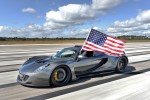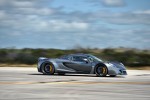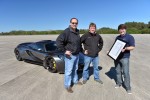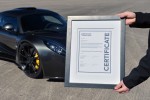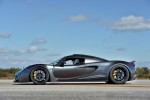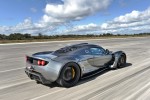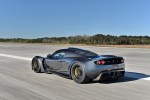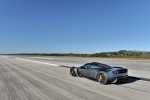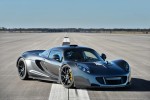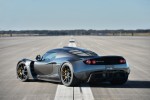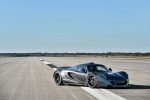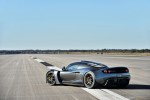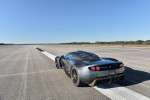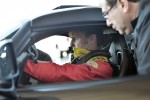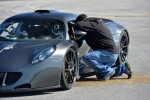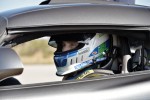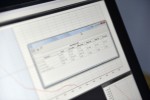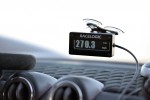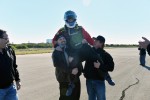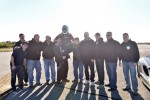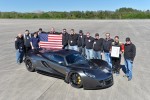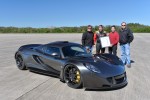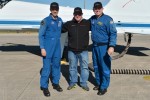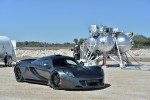Aerodynamic Test Session Results in New Top Speed for Hennessey Venom GT
On February 14, 2014, after extensive aerodynamic testing and data logging to verify the CFD aerodynamic model throughout its designed performance range, the Hennessey Venom GT achieved a top speed of 270.49 mph (435.31 km/h). The test session was conducted at the Kennedy Space Center on the Shuttle Landing Facility’s 3.2-mile runway. Brian Smith, Director of Miller Motorsport Park, experienced test driver and vehicle dynamic engineer, drove the Venom GT through all phases of the testing.
The Hennessey Performance team was able to utilize the Shuttle Landing runway via the Performance Power LLC Space Act Agreement. Performance Power collaborates with manufacturers and race teams alike to utilize the shuttle runway for the purposes of engineering validation, safety, innovative product design, and aerodynamic testing. The Hennessey team, its engineers and test driver worked closely with Johnny Bohmer and the Performance Power Team who made this test possible. A representative from VBox USA, world-renowned maker of engineering data-acquisition systems, was on hand to independently verify and document the vehicle’s aerodynamic performance.
“I knew the car had it in it, but it’s satisfying to officially validate the Venom GT’s high-speed stability,” said Hennessey CEO John Hennessey. “We’re elated to have met our goals of aerodynamic stability and crosswind tolerance.”
Validating the Venom GT’s performance, stability and safety at speed on such an incredible runway is why we came here,” said company founder and president John Hennessey. “I wanted to be an astronaut when I was a kid. Neil Armstrong was my childhood hero. Even though the astronaut thing didn’t work out for me, I am humbled to have had the opportunity to conduct our testing on the hallowed grounds of the Kennedy Space Center.”
To date, HPE has built and delivered eleven Venom GTs to owners around the world. Each vehicle is built to order and takes six months to complete. As the production run will be limited to a total of just 29 units worldwide.
- Published in News
